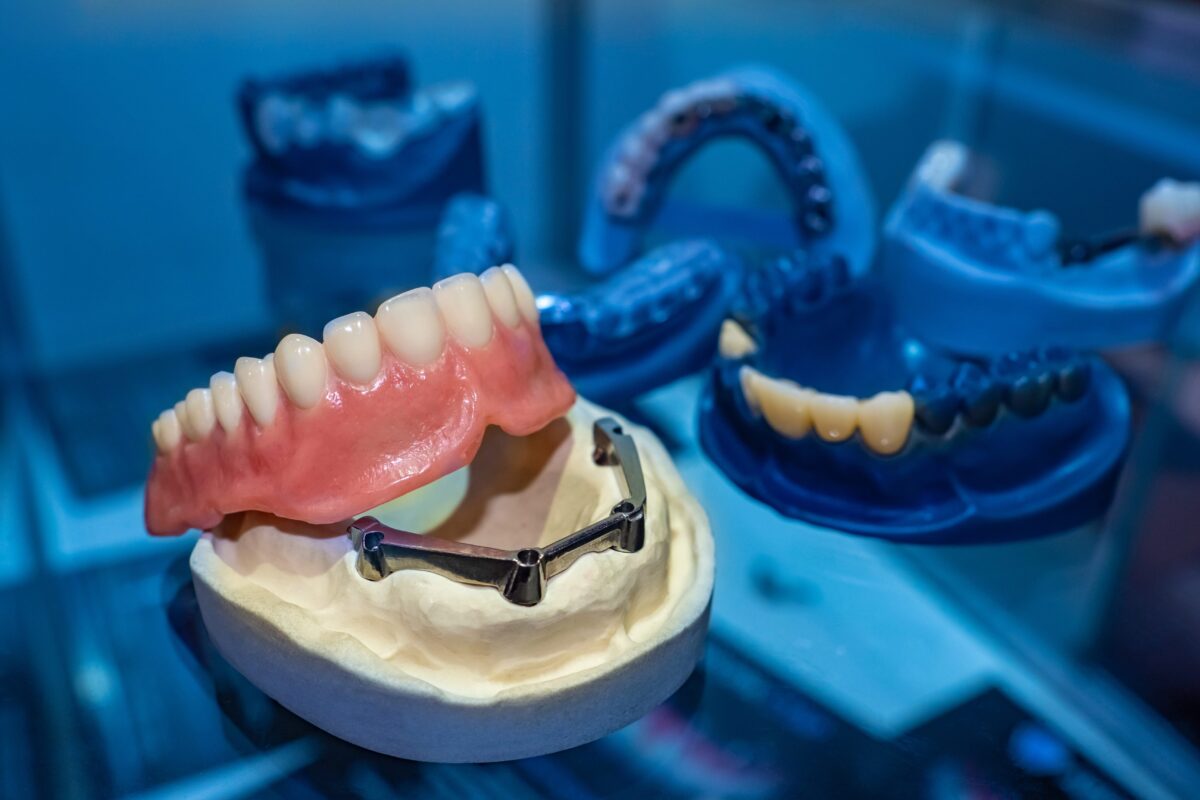Implant-supported overdentures have revolutionized the way dental professionals approach edentulism (complete loss of teeth). These prosthetics provide a viable alternative to traditional dentures, offering enhanced comfort, improved functionality, and greater stability. A key component in the success of these dentures is the use of custom-made attachments, which connect the denture to the implants placed in the jawbone. This blog explores the vital role of these attachments and how they contribute to the overall efficacy of implant-supported overdentures.
Understanding Implant-Supported Overdentures
Before diving into the specifics of custom-made attachments, it’s essential to understand what implant-supported overdentures are. Implant-supported overdentures represent a significant advancement in restorative dentistry, particularly for those who have experienced complete tooth loss. These devices provide a more stable and functional alternative to traditional dentures by anchoring them to dental implants secured in the jawbone. The use of different types of custom-made attachments plays a critical role in the functionality and comfort of these overdentures. Here, we delve into the various attachment systems available, each offering unique benefits tailored to patient needs.
The choice of attachment is crucial as it influences the ease of use, comfort, and overall satisfaction with the overdentures. The most commonly used attachment systems include:
Bar Attachments:
Bar attachments involve a metal bar that is fixed to implants across the jaw. The overdenture then clips onto this bar, providing excellent stability and load distribution. This type is particularly beneficial for patients with significant jawbone resorption, as it helps distribute chewing forces more evenly, which can reduce further bone loss.

Ball-and-Socket Attachments:
This system uses a ball (male) on the implant and a socket (female) on the denture, allowing for easy snap-on and snap-off functionality. Ball-and-socket attachments are simpler than bar systems and can be easier for patients to handle and maintain. They provide a good balance of stability and flexibility, allowing slight movements which can be more comfortable for some patients.
Locator Attachments:
Locator attachments are highly versatile and can be used even when implants are not perfectly aligned, thanks to their self-aligning design. They offer different levels of retention, which can be adjusted according to the patient’s needs and are known for their ease of use and durability. Locator attachments are also beneficial for patients with limited dexterity.
Magnetic Attachments:
These attachments use magnetic forces to hold the overdentures in place. While they provide the least retention among the attachment types, they are incredibly easy to use and can be ideal for patients looking for minimal hassle with insertion and removal. Magnetic attachments are less commonly used but can be suitable in cases where minimal retention is required.
Telescopic (Cone) Crowns:
Telescopic crowns consist of a primary crown fixed to the implant and a secondary crown built into the denture, which fits over the primary crown. This “crown-over-crown” setup provides excellent retention and stability. It is particularly popular in Europe and offers the advantage of easy cleaning and the ability to spread the load across multiple implants.
Choosing the Right Attachment
Selecting the appropriate type of attachment for implant-supported overdentures depends on several factors:
- Patient’s Oral Anatomy: The amount and quality of bone available can influence the choice.
- Aesthetic and Functional Needs: Some attachments offer better load distribution, while others are more focused on ease of use or aesthetics.
- Manual Dexterity and Comfort Preferences: For patients who struggle with manual tasks, simpler systems like magnetic or ball-and-socket might be preferable.
- Budget Considerations: Costs can vary significantly between different types of attachment systems.
The Role of Custom-Made Attachments
Custom-made attachments are the intermediaries between the dental implants and the overdentures. They are crucial for several reasons:
Improved Stability and Retention:
Custom attachments are designed to fit the unique contours of a patient’s dental implants and gum line. This personalized fit ensures that the overdentures are securely anchored, reducing the risk of slippage and movement during everyday activities such as talking and eating.
Enhanced Comfort:
By distributing the biting forces evenly across the jaw, these attachments help reduce pressure spots often caused by traditional dentures. This distribution not only enhances comfort but also aids in maintaining the integrity of the jawbone and surrounding oral structures.
Ease of Use:
Custom-made attachments often feature designs that allow for easy removal and reattachment of the overdenture, which is beneficial for cleaning and maintenance. This ease of use improves oral hygiene and the overall health of the oral cavity.
Aesthetic Advantages:
Because implant-supported overdentures with custom attachments are stable and well-fitting, they allow for more natural-looking aesthetics. Patients can enjoy a smile that feels more natural and less “bulky” than traditional dentures.
Conclusion
Custom-made attachments for implant-supported overdentures offer a significant improvement over traditional denture solutions, providing patients with a stable, comfortable, and aesthetic dental solution. They are a testament to how personalized dental care can dramatically improve the quality of life for those dealing with tooth loss. For anyone considering dental implants or looking to upgrade from traditional dentures, discussing custom attachment options with a dental specialist could be the first step towards a more secure and comfortable smile.




